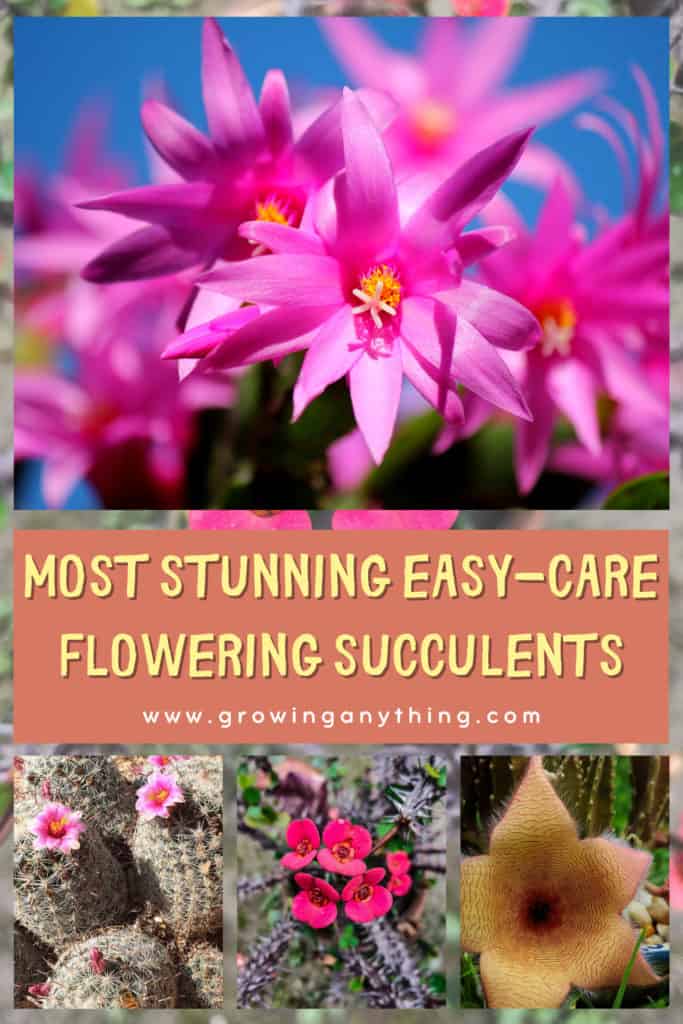20 Best Flowering Succulents
The article includes the list of the most flowering succulents that are as beautiful as they are easy to take care of. Keep reading to find out more about the charming succulents and their flowers!
In general, succulents are very beneficial for your home. Even though some of them are compact, they have air-purifying properties and they add fresh oxygen to the room. People also believe succulents improve memory, pain tolerance, and focus in people who grow them. Nevertheless, succulents are stunning decorations in every space, especially the ones with beautiful flowers.
Luckily, most succulents are resilient, drought tolerant, and low-maintenance. If it sounds like your thing, please check the following list with the most beautiful flowering succulents!
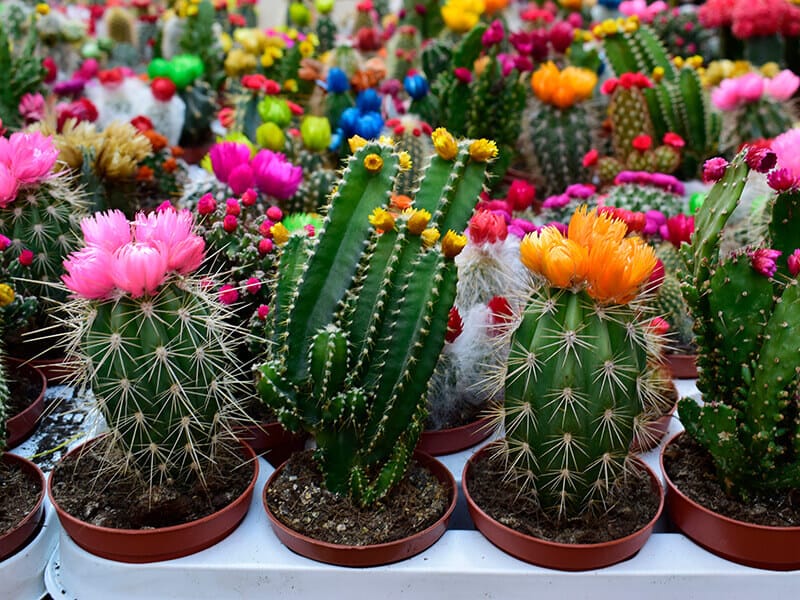
#1 Crown of Thorns
Euphorbia milii has multiple common names, including Crown of Thorns, Christ Plant, and Christ Thorns. The plant has bright green foliage and stunning flowers. But, the bracts of flowers are bright red and yellow, which give the plant a unique appearance.
In its native habitat Madagascar, the Crown of Thorns can reach up to six feet. However, in the USA, it rarely grows more than three feet.
The ideal conditions for Crown of Thorns are a dry climate, well-draining potting mix, and a lot of sunlight. Because the plant prefers warm temperatures, it makes an ideal houseplant!
Find out how the plant got its name!
Here is the best succulent tips for beginners. Watch the video:
#2 Stapelia
Stapelia is an attractive and weird-looking stem succulent plant. It is recognizable by its star-shaped center with a distinct round center.
These plants are sometimes called Giant Cactus Starfish.
Stapelia has several varieties with flowers of different colors. The most amazing is the two-colored flowers with speckles of colors on the petals.
Other than its appearance, Stapelia is known for its specific fragrant flowers. The peculiar smell resembles rotting meat! But, it is attractive to flies which aid the pollination!
Read more information about this unusual flowering succulent!
#3 Christmas Cactus
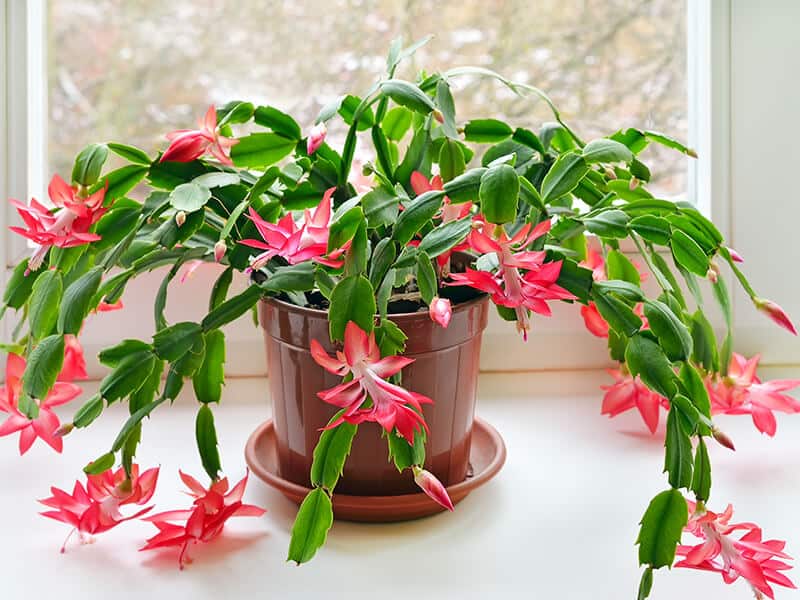
You probably know Schlumbergera x buckleyi by its common name – Christmas Cactus. The plant is very popular because of its wonderful appearance and low maintenance. Bright pink and lilac tubular flowers appear on the long stems in the winter, spring, or fall.
That is why there are several additional names for the plant – Thanksgiving cactus and Easter cactus.
The plant thrives in a sunny location and high humidity. If you have an east-facing window in your bathroom, that would be the ideal location for your plant. However, ensure the sunlight is filtered to prevent the foliage from fading.
Do you want to know more about Christmas Cactus care? Click here to find out!
#4 Rock Purslane
Calandrinia spectabilis, best known as Rock Purslane, is a shrubby succulent perennial. The plant doesn’t get taller than eight inches. But during the bloom time, the flowering stems rise above the foliage.
The flowers are vivid-purple and look almost like poppy flowers. Calandrinia is easy to grow indoors and outdoors.
It is a very drought-tolerant plant, coming from Chile.
Here is more information about Rock Purslane.
#5 Pincushion Cactus
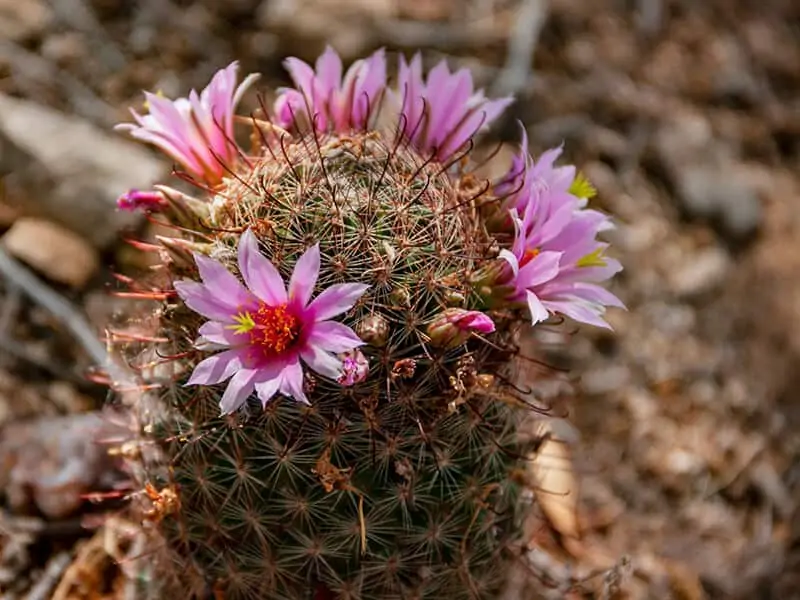
Mammillaria or Pincushion Cactus is perfect for beginners in the gardening world! The plant is easy to take care of, plant, and propagate and will award you with stunning flowers! Because it grows best when left alone, Pincushion Cactus is also suitable for busy people and those who travel a lot.
In spring, Pincushion Cactus develops a circle of small, daisy-like flowers in different colors. There are several varieties of the Pincushion Cactus, including Old Lady, Giant Lady, and Snowball Cushion Cactus.
The level of fuzziness on the leaves and the color of the flowers are distinctive features of each variety.
Read everything there is about Pincushion Cactus before you plant it!
#6 Huernia
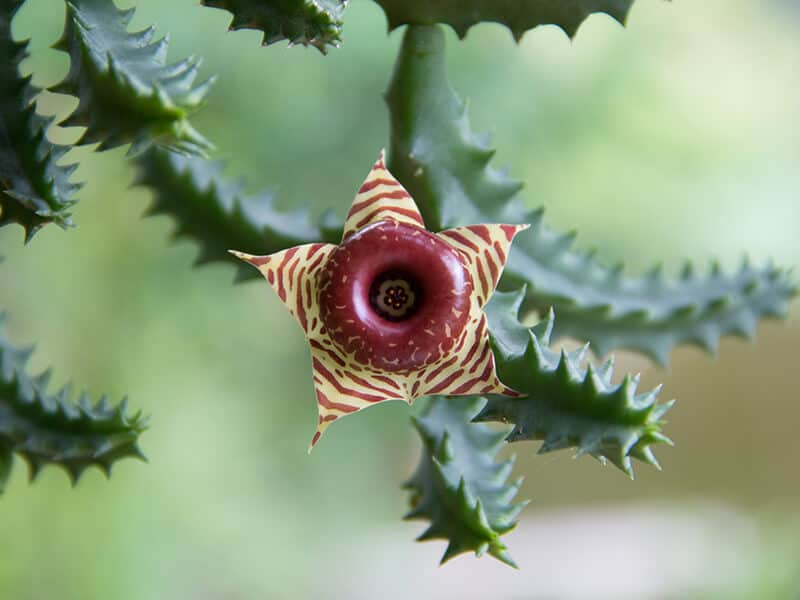
Huernia Zebrina is also known as a Lifesaver plant and is best known for its attractive flower. The plant has striped red and beige petals and a glossy dark red ring in the middle of the flower.
This perennial succulent is a creeper. Surprisingly, the plant is easy to grow. You have to ensure good drainage in the pot and come to the correct watering schedule. The plant does best in partial shade because it is an understory plant in its native Africa.
Read more about Huernia Zebrina before you start growing it in your home!
#7 Afterglow
Even though Echeveria is valued by its rosette-shaped foliage, the variety Afterglow has beautiful flowers too. These improve the ornamental value of the plant.
The Afterglow variety features pinkish and lavender foliage with pink borders on the edges. On top of everything, the succulent produces deep orange flowers which emerge from the foliage!
The plant is easy to grow sandy, well-draining soil, sun, or partial shade with dry to medium moisture conditions.
Echeveria is easy to propagate when the time comes. Click here to find out how!
#8 Ice Plant
Delosperma cooperi, or hardy Ice plant is a lovely shrubby succulent. In cold climates, people grow it as an annual plant. But if you live in warmer hardiness zones, your Ice Plant can survive hard winters.
Ice plant looks best when grown in containers. That way, they provide the cascading effect as the plant spreads over the rims of the pots. The flowers are multi-colored with darker centers and petals with an almost ombre effect.
Discover how to choose the ideal spot for Ice plant.
#9 Marble Buttons
Conophytum calculus or Marble Buttons has distinct light green round stems. During the flowering season, the plant develops lovely yellow and orange blooms. These look amazing in contrast with pale greenish stems.
This succulent likes full sun exposure and stays compact. The maximum height it can reach is around 12 inches, but it spreads double of it. The worst thing you can do for Marble Buttons succulent is to overwater it. It doesn’t need a lot of water, especially during the winter!
Read more interesting facts about Marble Buttons!
Check out the correct way to water succulent plants:
#10 Portulaca
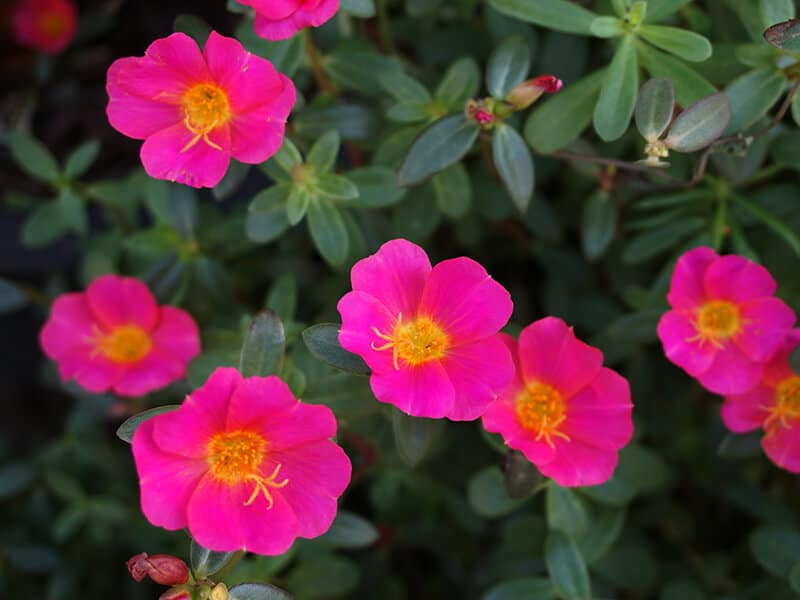
Portulaca oleracea or simply Purslane is a weedy succulent. The plant is grown for other than ornamental value. In the past, it was used as a medicinal plant. Moreover, it is rich in Omega 3-fatty acids.
It develops cute little, tubular bright yellow flowers.
Purslane enjoys full sun, all types of soil, and warm temperatures. A colder climate will cause stunted growth to the plant.
Do you wonder how Purslane plants taste? Click here to find out!
#11 Flowering Kalanchoe
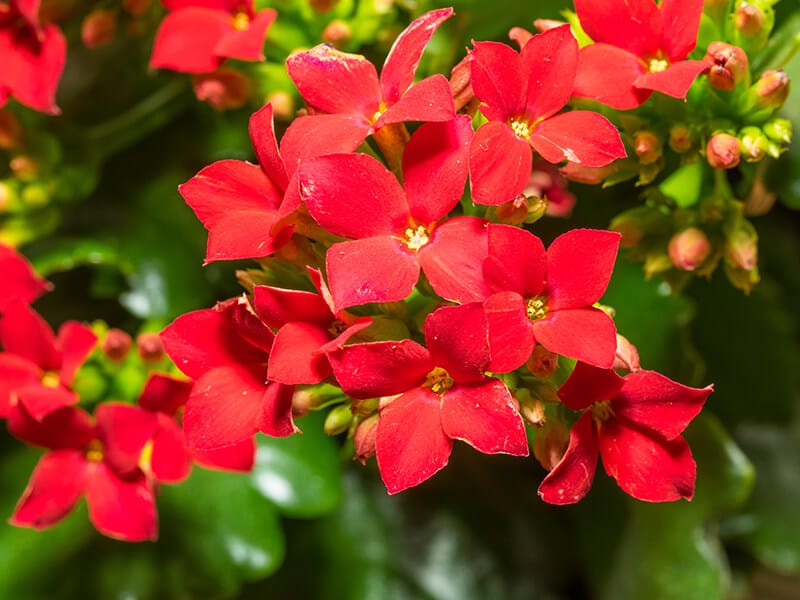
Kalanchoe blossfeldiana is probably the most common succulent grown especially for its blooms. There are numerous varieties of Kalanchoe, with bright orange, pink, red and yellow flowers!
The plant is easy to take care of, especially indoors. It is drought-tolerant and it needs warm indoor temperatures and sunlight.
Kalanchoe can survive in different soil types as long as the soil is well-draining. However, the combination of peat moss and perlite is ideal.
The flowers stay on the plant for months and make a stunning decoration in all rooms!
Find out everything about different Kalanchoe varieties!
#12 Epiphyllum
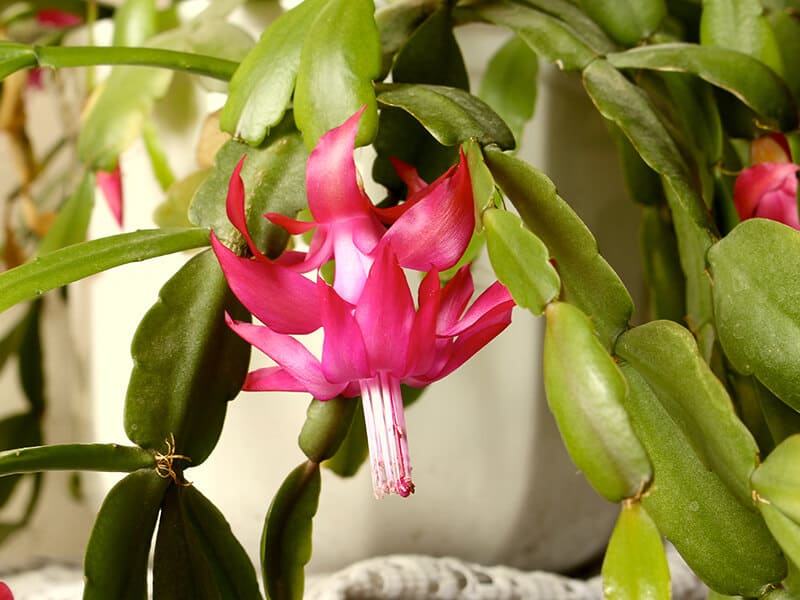
Epiphyllum is the beautiful succulent recognizable by its Orchid-like flower. Because of it, the plant is sometimes called the Orchid cactus.
As a houseplant, Epiphyllum is fuss-free. However, it won’t produce amazing and bold flowers until the plant reaches maturity, after around five years of planting. The flowers have a distinct sweet scent and the blooming time is at the end of the spring.
The flowers are creamy-white, purple, bright pink, etc.
Here is the primary information on the Epiphyllum plant!
#13 Jade Plant
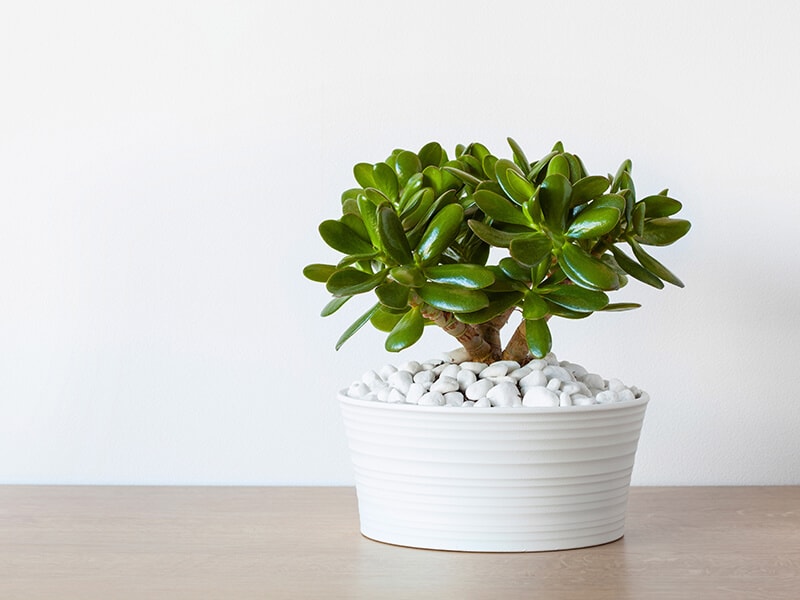
You have probably seen Crassula ovata in the office or your friend’s home. It is one of the most common plants in households and people believe it attracts money and wealth. The common name is the Jade plant, and it is a low-maintenance succulent, like many others.
The key to keeping your Jade plant vital is to never let the plant dry out completely. Instead, check the moisture in the soil to get your optimal watering schedule. Keep the plant exposed to the sun for as long as possible to ensure vigorous growth.
The plant needs fertilization twice a year to support the growth and flower production.
Read more tips for growing this luck-bringing plant!
Learn the safe way to repot Jade plant without damaging it:
#14 Adenium
Adenium obesum or Desert Rose is one of my favorite succulents ever, especially the variety Star Cluster. The native habitat of the plant is Sub-Saharan Africa and it features warm temperature and full sun exposure. So, you can replicate the conditions to ensure the proper growth of your Desert Rose.
Tubular flowers will appear even if you neglect the plant completely! All things considered, your Desert Rose will grow and flower despite the care you provide!
Read more about the stunning Desert Rose plant!
#15 Red Yucca
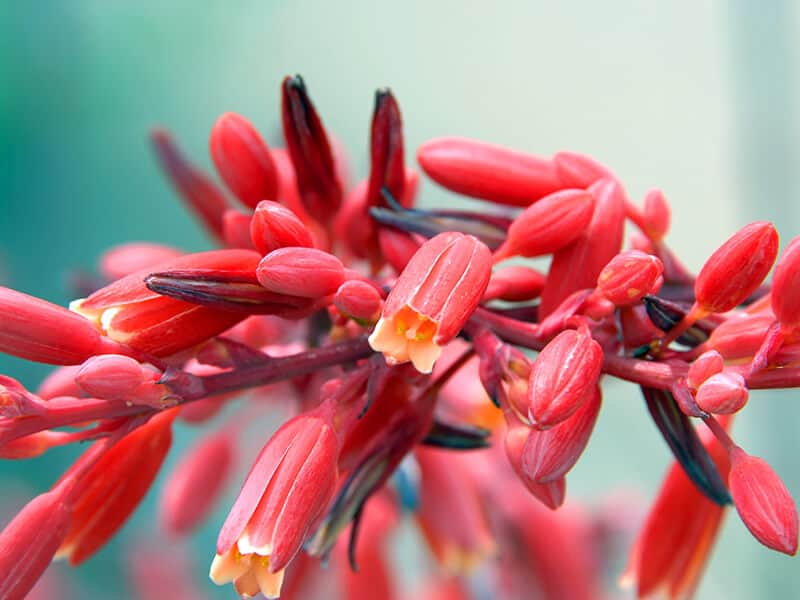
Hesperaloe parviflora is not a typical perennial succulent. The foliage and the flowers have high ornamental value. The leaves are green, but they slowly transform into the purplish shade in cold climates. The plant is heat and drought tolerant and can survive low temperatures easily.
It is called Red-Yucca, because of the similarities with the same-named plant. The flowers come in shades of red and pink and have a distinct tubular shape.
Red Yucca is easy to grow and isn’t prone to pests and diseases.
Getting Red Yucca to bloom is tricky. Find out the best tips for the most wonderful Red Yucca flowers!
#16 Peanut Cactus
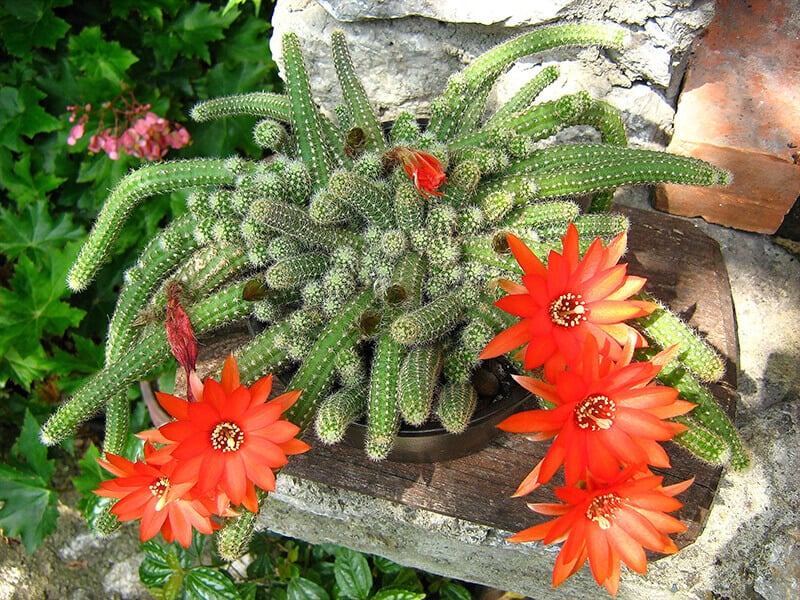
Peanut cactus get six inches tall and is one of the cutest cacti you’ll ever see. The cactus looks prickly, but the spines on the branches are soft.
The botanical name of the plant is Echinopsis chamaecereus. If you live in a frost-free climate, you can grow Peanut cactus outdoors. But, the plant will grow as a houseplant as well! In spring and summer, colorful orange and red flowers appear from the branches.
Do you like the Peanut cactus? Check out more information on the plant!
#17 Bromeliads
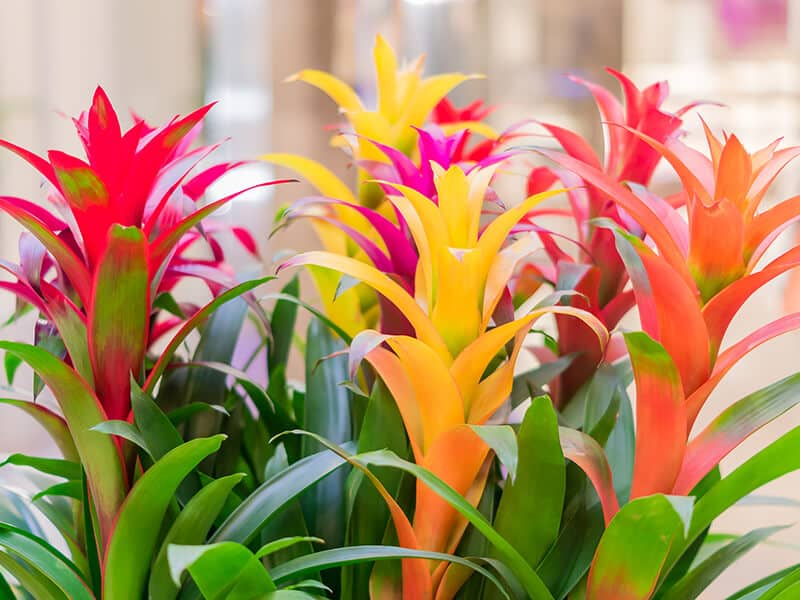
Bromeliaceae or Bromeliads can be grown indoors and outdoors. Indoors, ensure the plant is exposed to bright and indirect sunlight, and outdoors plant it in the partial shade. It will prevent the sunlight from burning the foliage and the flowers.
Bromeliads add an exotic touch to the space with bright green foliage and upright central flower. The flowers are red, orange, yellow, and pink and the exact shade depends on the cultivar.
Find out how to grow Bromeliads now!
#18 Emily Cobweb Houseleek
Sempervivum arachnoideum or Emily Cobweb Houseleek, shortly Emily features rosette-shaped foliage in different shapes of red and green.
The plant develops small, star-shaped pink flowers on top of the stems. One plant can produce several flowers and flowering stems, which give the plant a richer look.
Overall, the plant doesn’t require complex care. You can grow it in a pot or rock garden for a more decorative effect.
The ideal location is full sun, but the plant will adapt to light shade. Keep in mind to water the plant regularly during the growing season. The rest of the time, the plant needs less water.
Read more about the origin of the Emily Cobweb Houseleek!
Find out how to build a rock garden for your succulents. Watch the video below:
#19 Ruby Ball
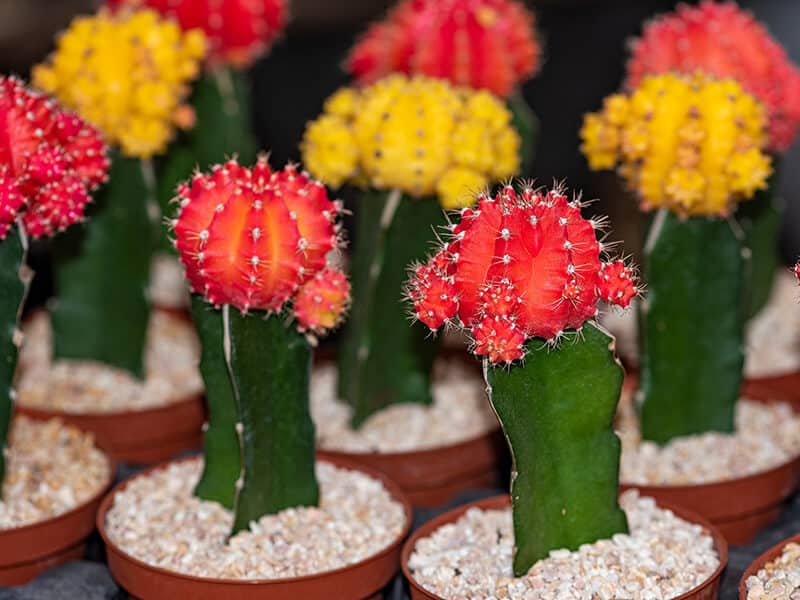
Succulent Gymnocalycium mihanovichii is known under the name Ruby Ball or Moon Cactus. The plant features a bright orange, yellow or red top, called the scion. The plant doesn’t have hair or spines, and it is relatively soft to touch.
Moon Cactus lives several years because of the different growth rates of roots and upper parts of the plant. But, if you want to prolong the life, you can separate the top part and start growing a new cactus!
Pick spring or summer, so your lovely Moon Cactus can grow and establish itself fast.
Learn how to identify potential issues with Ruby Ball.
#20 Stonecrop
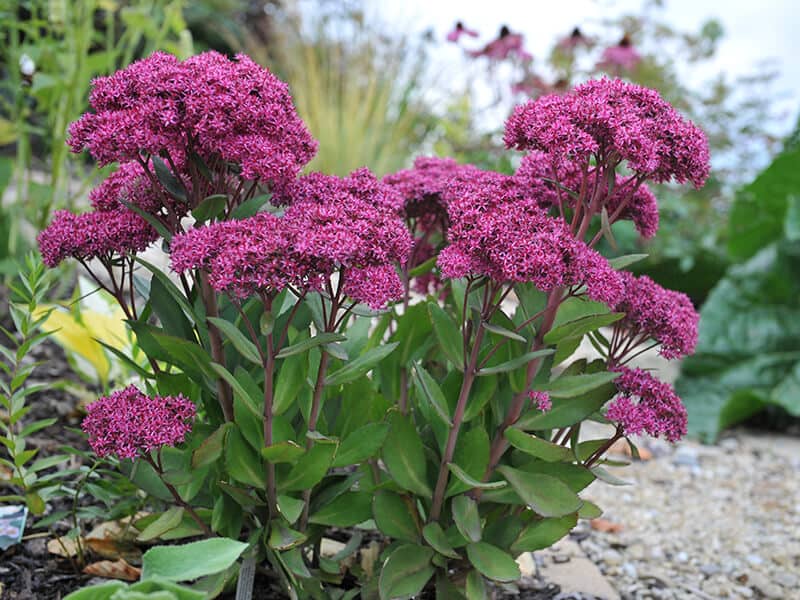
Sedum spathulifolium or Stonecrop succulent is one of the best succulents for outdoor gardens. The plant can adapt to different conditions – from freezing temperatures to hot weather and drought!
Even though Stonecrop is easy to grow, there are still a few tips to know about them. For example, using porous succulent soil does half of the work for you. Also, reduce the watering frequency in the winter and use diluted fertilization in the spring.
Find out more interesting facts about Stonecrop succulents!
Flowering Succulents – Fit Every Setting and Everyone’s Skills
Succulents are adaptable and easy to grow plants. They are as good for passionate gardening collectors as they are for beginner gardeners.
Their special foliage and unique flowers are real conversation starters, whether you grow them outdoors or indoors.
Because some of them are quite compact, they are great for small rooms as well.
Which succulent is your favorite one?
If you enjoyed the article, please don’t hesitate to give it a thumbs up!
